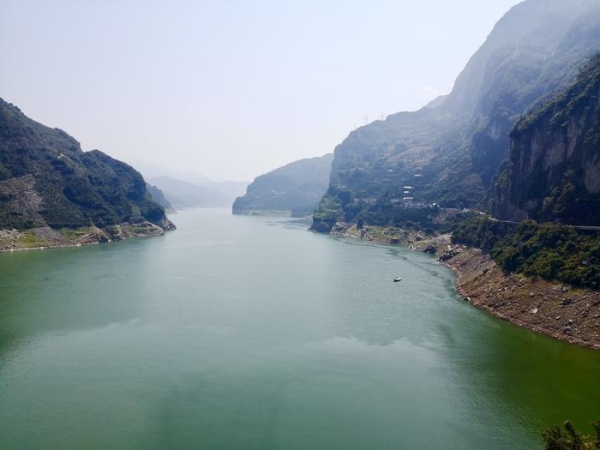 Home - Environmental monitoring - Applications - Continuing Climate Warming Trend and Pronounced Interannual Variability in Precipitation in the Three Gorges Region in 2022–2023
Home - Environmental monitoring - Applications - Continuing Climate Warming Trend and Pronounced Interannual Variability in Precipitation in the Three Gorges Region in 2022–2023

The Three Gorges Region of the Yangtze River (TGR) in China has a unique geographical location, complex geomorphological features, and a fragile and sensitive climate. The Three Gorges Project, as a large-scale comprehensive water conservancy hub project in the region, has not only greatly changed the nature, society and economy of the area, but also brought great benefits and created problems, such as environmental and climatic impacts. Therefore, it is of great importance to conduct climate and environmental monitoring in the region.
Recently, a team led by Chen Xianyan, a Professor at the National Climate Centre, published a report entitled "Climate state of the Three Gorges Region in the Yangtze River basin in 2022–2023" in the journal Atmospheric and Oceanic Sciences Letters (AOSL). The report, which is the fifth in the series published in AOSL, describes the characteristics of climate anomalies and acid rain in the TGR in the past two years.
Professor Chen, corresponding author of the paper, explains that to meet the needs of the construction and safe operation of the Three Gorges Project, she and her colleagues have been carrying out local climate monitoring and assessment for many years, and have been releasing the annual climate report on the TGR to the public for six years.
The report points out that the average temperature in the TGR in 2022 and 2023 was 0.8℃ and 0.4℃ higher than normal, respectively, making them the two warmest years in the last decade, particularly in the summer of 2022, which was the hottest on record. Precipitation was very different between the two years, with rainfall in 2022 almost 20% below normal, and the high temperatures and low rainfall led to a severe drought in the area that lasted from summer to winter (see image, below), while rainfall in 2023 was 15% higher. During these two years, the region experienced extreme heatwaves, regional heavy rainfall and flooding, overcast rain, and cold spells. The report also discusses the important factors contributing to the occurrence of the extreme heatwave in the summer of 2022.
Read more at Institute of Atmospheric Physics, Chinese Academy of Sciences:http://aosl.iapjournals.ac.cn/EN/news/news347.shtml
Learn more about us:
 Tel:+86-400 961 6990 Email:info@healthyphoton.com
Add:Room 305, Building 1, Zhongchuang Science Park, Jinyuan Road, Panhuo Street, Yinzhou District, Ningbo City,China
Tel:+86-400 961 6990 Email:info@healthyphoton.com
Add:Room 305, Building 1, Zhongchuang Science Park, Jinyuan Road, Panhuo Street, Yinzhou District, Ningbo City,China


